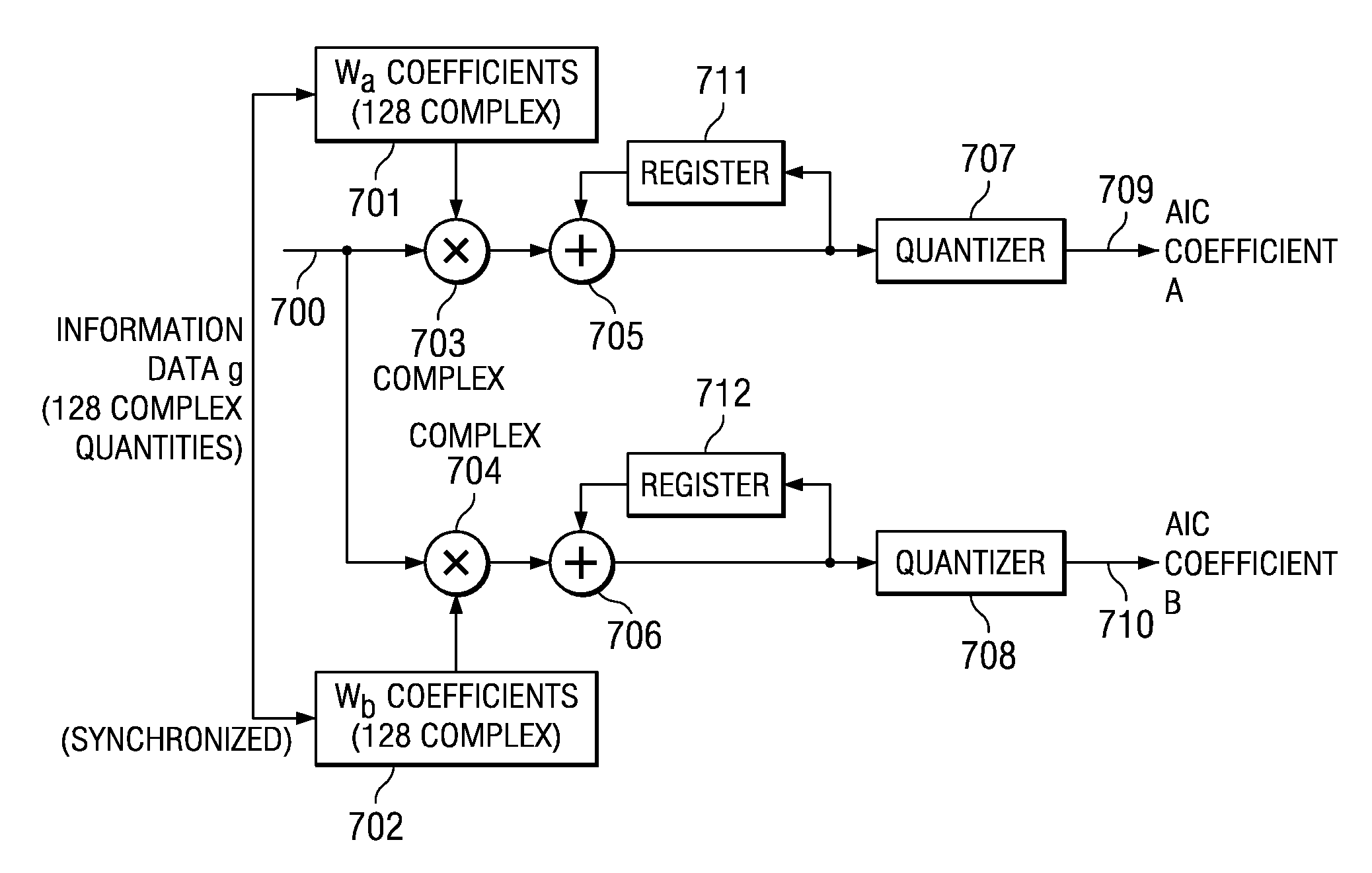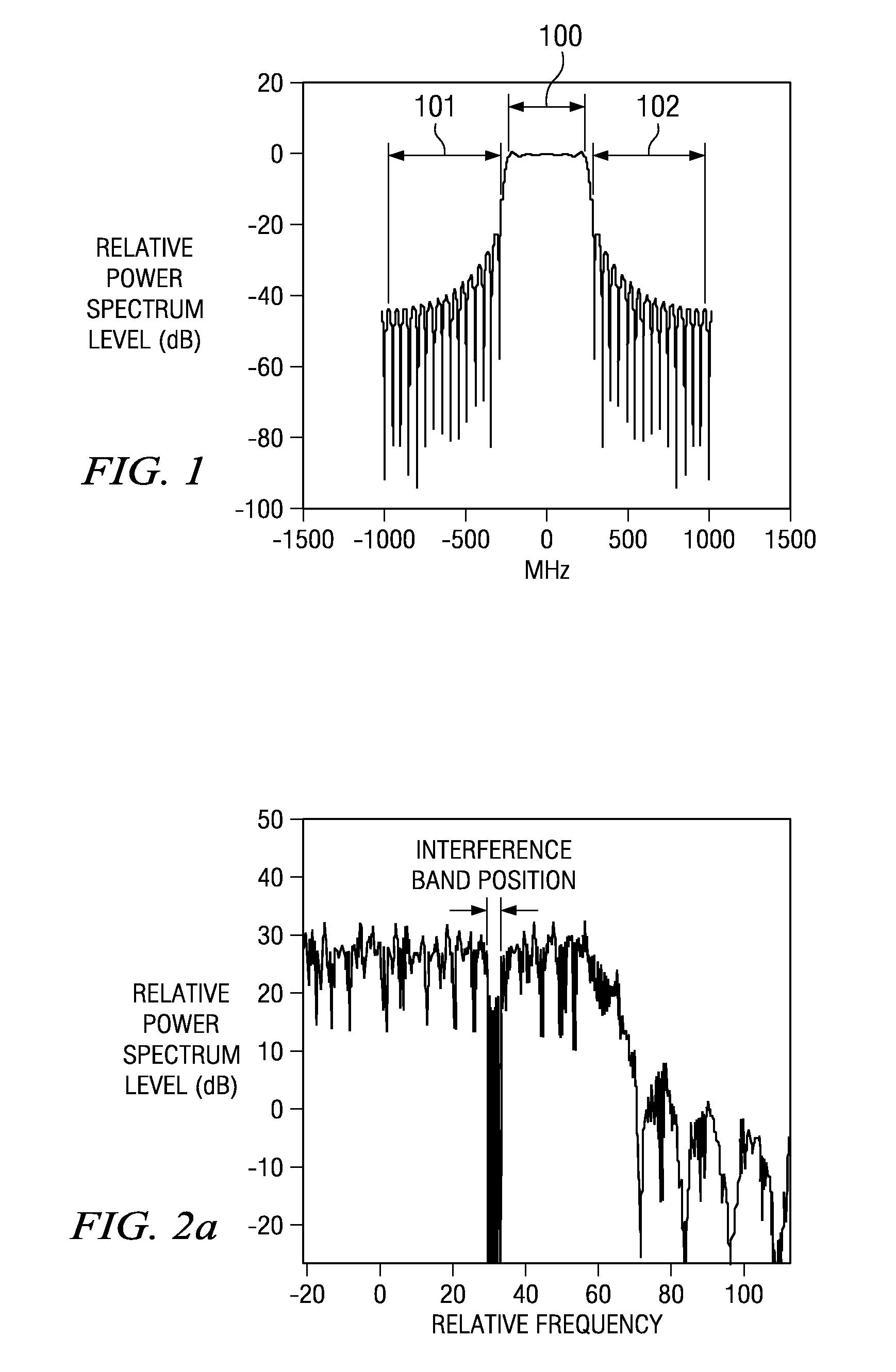Narrow band interference cancellation technique for OFDM transmitters
a transmitter and narrow band technology, applied in the field of narrow band interference cancellation technique for ofdm transmitters, can solve the problems of high chip cost, difficult design of narrow-band rf-band notch filters, and inability to achieve high chip cost, so as to minimize the complexity of the hardware required to implement the algorithm, the effect of minimizing the number of tones
- Summary
- Abstract
- Description
- Claims
- Application Information
AI Technical Summary
Benefits of technology
Problems solved by technology
Method used
Image
Examples
Embodiment Construction
[0029]FIG. 3 illustrates the basic concept of active interference cancellation (AIC). In the MB-OFDM system, the information data is transmitted using 128 tones with the spectrum ranging from 301 to 302 of FIG. 3a. Among these 128 tones only 100 tones are actually assigned to the user data. The remaining 28 tones are reserved for system use. When this data is modulated in OFDM and transmitted, part of the spectrum shown as 303 interferes with the narrow-band victim system. FIG. 3b illustrates stopping transmission of tones within the interfering band. The direct interference to the victim band 308 is eliminated. FIG. 3c illustrates this does not guarantee the complete elimination of the interference because the tone zeroing affects only the tone center frequencies. Spurious signals from each transmitted data tone accumulate and remain relatively large as indicated by 304. Thus the elimination of a large number of tones is required to achieve the needed 23 dB attenuation.
[0030] Beca...
PUM
 Login to View More
Login to View More Abstract
Description
Claims
Application Information
 Login to View More
Login to View More - R&D
- Intellectual Property
- Life Sciences
- Materials
- Tech Scout
- Unparalleled Data Quality
- Higher Quality Content
- 60% Fewer Hallucinations
Browse by: Latest US Patents, China's latest patents, Technical Efficacy Thesaurus, Application Domain, Technology Topic, Popular Technical Reports.
© 2025 PatSnap. All rights reserved.Legal|Privacy policy|Modern Slavery Act Transparency Statement|Sitemap|About US| Contact US: help@patsnap.com



